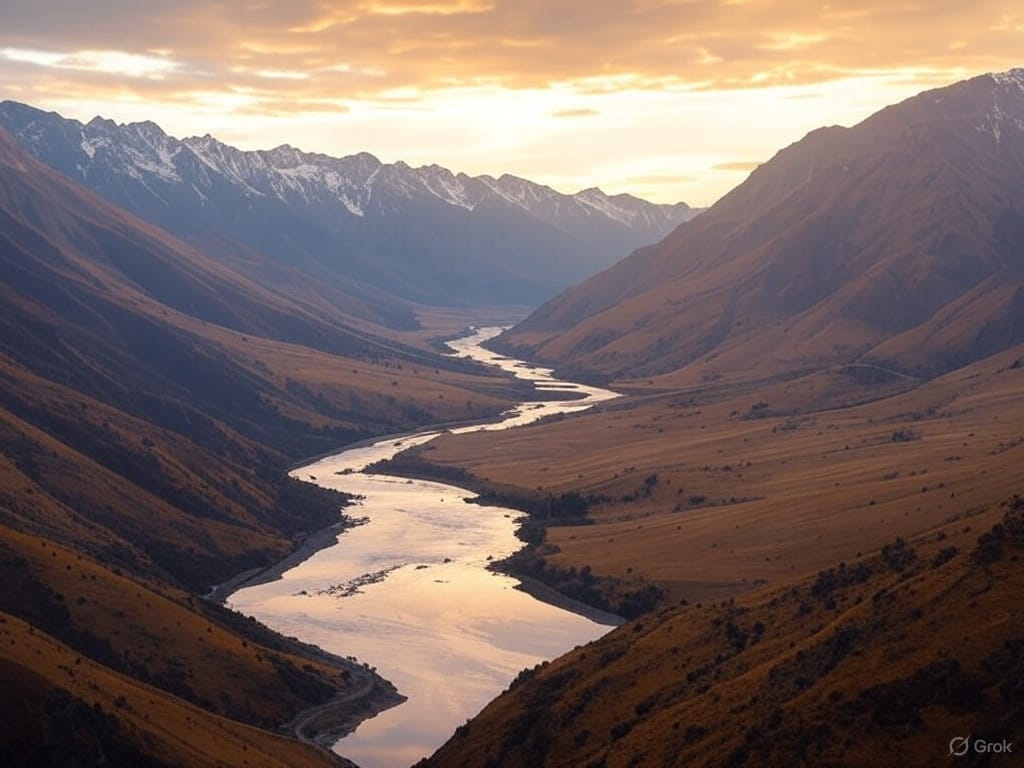The Geography of Power
Geography, from towering mountains to sprawling rivers, has silently shaped the rise and fall of empires, dictating their power and legacy across history.

Empires rise and fall, their legacies etched into the annals of history through conquests, culture, and innovation. Yet beneath the tales of ambitious rulers and heroic battles lies a silent force that has shaped their destinies: geography. Mountains have shielded civilizations, rivers have nourished them, and coastlines have propelled them to greatness—or doom. From the rugged peaks of the Himalayas to the sprawling deltas of the Nile, the contours of the Earth have dictated the fates of nations. Even today, in an age of technology and globalization, geography remains a geopolitical force, subtly influencing the balance of power. In this exploration, we’ll uncover how land has sculpted empires throughout history and why it continues to matter.
Mountains: Nature’s Fortresses
Mountains have long served as both protectors and barriers, shaping the survival and expansion of empires. Their towering presence can isolate civilizations, preserving their cultures and thwarting invaders, or they can limit growth, confining a people to a rugged existence. Consider the Roman Empire, which struggled to extend its dominion beyond the Alps. These jagged peaks acted as a natural wall, shielding northern tribes while challenging Roman legions with treacherous terrain and harsh winters. The Alps didn’t just hinder Rome’s ambitions—they helped define its northern frontier.
Further east, the Himalayas played a similar role in safeguarding the Indian subcontinent. For centuries, these colossal mountains deterred invaders from the north, allowing empires like the Maurya and Gupta to flourish in relative isolation. Yet, when breaches occurred—such as through the Khyber Pass—empires faced seismic shifts, as seen with the Mughal conquests. Mountains, then, are double-edged swords: they offer defense but can also isolate, preventing the cultural and economic exchange that fuels growth.
Rivers: Lifelines of Civilization
If mountains are the guardians of empires, rivers are their lifeblood. Throughout history, the world’s greatest civilizations have emerged along fertile riverbanks, where water sustains agriculture, trade, and population growth. The Nile River, for instance, was the backbone of ancient Egypt. Its annual floods enriched the soil, enabling a surplus of crops that supported a centralized state and monumental achievements like the pyramids. The Nile’s predictable flow also fostered stability, allowing pharaohs to consolidate power over a unified kingdom.
Similarly, the Tigris and Euphrates rivers cradled Mesopotamia, the “land between rivers,” where empires like Babylon and Assyria rose. These waterways provided irrigation in an arid region, but their unpredictable flooding demanded sophisticated engineering and governance—skills that strengthened imperial authority. In China, the Yellow and Yangtze rivers nurtured the Han and subsequent dynasties, their basins forming the agricultural heartland that sustained millions.
Rivers also facilitate trade and communication, linking inland regions to distant markets. The Roman Empire’s control of the Rhine and Danube rivers enabled it to project power across Europe, while the Mississippi River later fueled the United States’ westward expansion. Yet rivers can be vulnerabilities too—invaders often follow their courses, as the Mongols did along the Volga. Empires that master their rivers thrive; those that fail to defend them falter.
Coastlines: Gateways to Dominance
Coastlines have historically been the launchpads of imperial ambition, offering access to the sea and the world beyond. Maritime empires—think Athens, Venice, or Britain—owe their ascendancy to geography’s gift of harbors and navigable waters. Greece’s jagged coastline and island-studded Aegean Sea birthed a seafaring culture that dominated the eastern Mediterranean. The Athenians leveraged their naval prowess to build an empire of trade and tribute, culminating in the Delian League.
Centuries later, the British Empire harnessed its island geography to become a global superpower. Surrounded by water, Britain developed a navy that ruled the waves, its ports like London and Liverpool serving as hubs of commerce and conquest. Control of strategic choke points—Gibraltar, Suez, Singapore—amplified its reach, proving that coastlines don’t just enable trade; they dictate geopolitical leverage.
But coastlines come with risks. Open shores invite invasion, as the Vikings demonstrated against Anglo-Saxon England. The sprawling coasts of India, meanwhile, left it vulnerable to European colonial powers arriving by sea. Geography grants coastal empires opportunity, but it demands vigilance and innovation to turn potential into power.
Plains: Open Battlegrounds
Vast plains and steppes present a paradox: they offer space for expansion but expose empires to relentless threats. The Eurasian Steppe, stretching from Eastern Europe to Central Asia, birthed some of history’s most formidable conquerors—the Huns, the Mongols, the Scythians. Its flat expanse favored horseback mobility, enabling nomadic empires to strike with speed and scale. The Mongols, under Genghis Khan, exploited this geography to forge the largest contiguous empire ever, their horsemen sweeping across Asia and Europe with devastating efficiency.
Yet the same openness that empowers nomads challenges settled empires. Russia’s vast plains, while granting it immense territory, left it perpetually exposed to invasion—from the Mongols to Napoleon. The lack of natural barriers forced Russia to rely on “defense in depth,” trading space for time. In contrast, the fertile plains of northern India supported the prosperity of empires like the Mughals but also attracted wave after wave of invaders. Plains promise abundance but demand constant protection.
Deserts: Harsh Dividers
Deserts, with their harsh climates and scarce resources, might seem inhospitable to empires, yet they’ve played pivotal roles in history. The Sahara Desert isolated sub-Saharan Africa from the Mediterranean world, allowing kingdoms like Mali and Songhai to develop distinct identities while shielding them from northern conquest. Similarly, the Arabian Desert birthed the Islamic Caliphates, whose camel-mounted armies turned arid expanses into highways of expansion.
Deserts also serve as buffers. The Gobi Desert protected China’s northern frontier from nomadic incursions, complementing the Great Wall’s defenses. Yet deserts can be crossed—Alexander the Great marched through the Gedrosian Desert, and modern powers vie for control of oil-rich sands. Geography makes deserts obstacles, but human ingenuity transforms them into arenas of power.
Geopolitics Today: Land’s Lasting Role
In today’s world of satellites, drones, and digital networks, it’s tempting to think geography’s influence has waned. Yet it remains a cornerstone of geopolitics. Russia’s pursuit of warm-water ports drives its actions in Crimea and Syria, echoing centuries-old imperatives. China’s Belt and Road Initiative seeks to overcome its landlocked western interior, linking it to global trade routes. The United States’ dominance owes much to its two-ocean buffer and resource-rich heartland.
Even climate change underscores geography’s enduring power. Rising sea levels threaten coastal nations, while melting Arctic ice opens new shipping lanes—and new conflicts. Mountains, rivers, and coastlines still shape alliances and rivalries, proving that the Earth’s features are not just relics of the past but active players in the present.
Conclusion: Land’s Enduring Power
Geography is no mere backdrop to history—it’s a sculptor of empires, a force that elevates some and humbles others. Mountains defend, rivers sustain, coastlines connect, and plains provoke. From ancient Egypt to modern superpowers, the interplay of land and ambition has written the story of civilization. As we navigate an uncertain future, understanding this relationship reminds us that while human will drives progress, the Earth itself sets the stage. The geography of power is an eternal dance—one we’re still learning to master.





